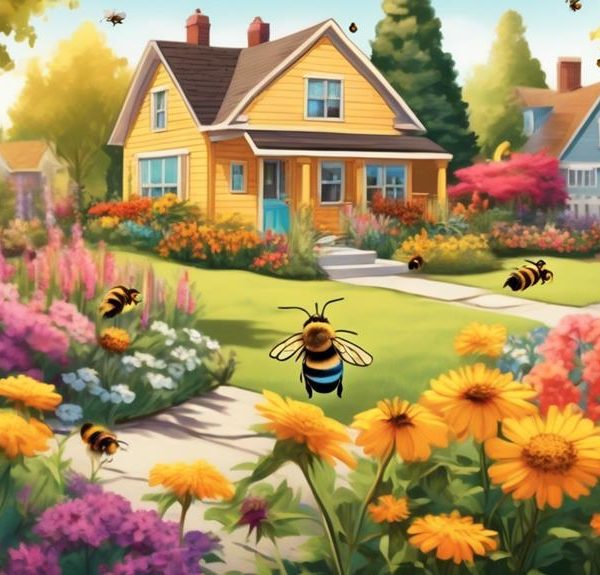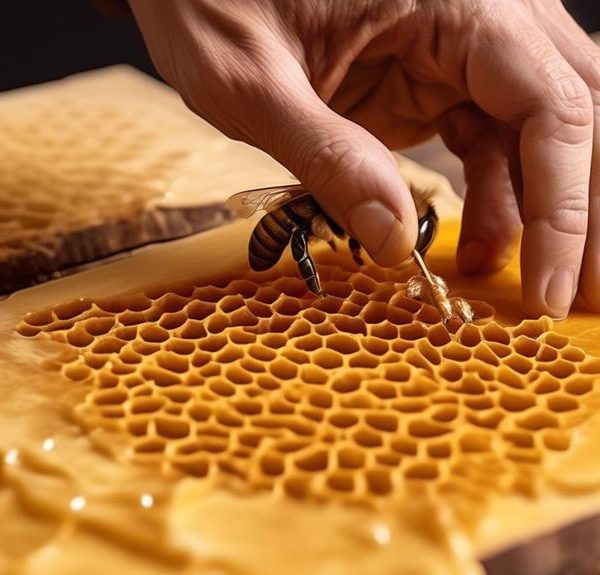Yes, you can use beeswax on hardwood floors, but how does it enhance their beauty and longevity? Dive in to discover more.

Can You Use Beeswax on Hardwood Floors?
Did you know that nearly 80% of homeowners prefer hardwood floors for their timeless appeal and durability? You're likely part of this majority, and you're probably always on the lookout for ways to maintain and enhance the beauty of your flooring.
Beeswax, a natural wax produced by honey bees, has been used for centuries in a variety of applications, including floor care. But can you really use beeswax on your cherished hardwood floors without causing damage?
By the end of this discussion, you'll have a well-rounded understanding that could reframe your approach to hardwood floor care.
Key Takeaways
- Beeswax is a natural, durable wax that can be used on hardwood floors.
- It provides moisture resistance and protects the wood from water damage.
- Beeswax fills in pores and cracks, creating a smooth and polished surface.
- Regular application of beeswax enhances the wood's natural beauty and preserves its condition.
Understanding Beeswax Properties
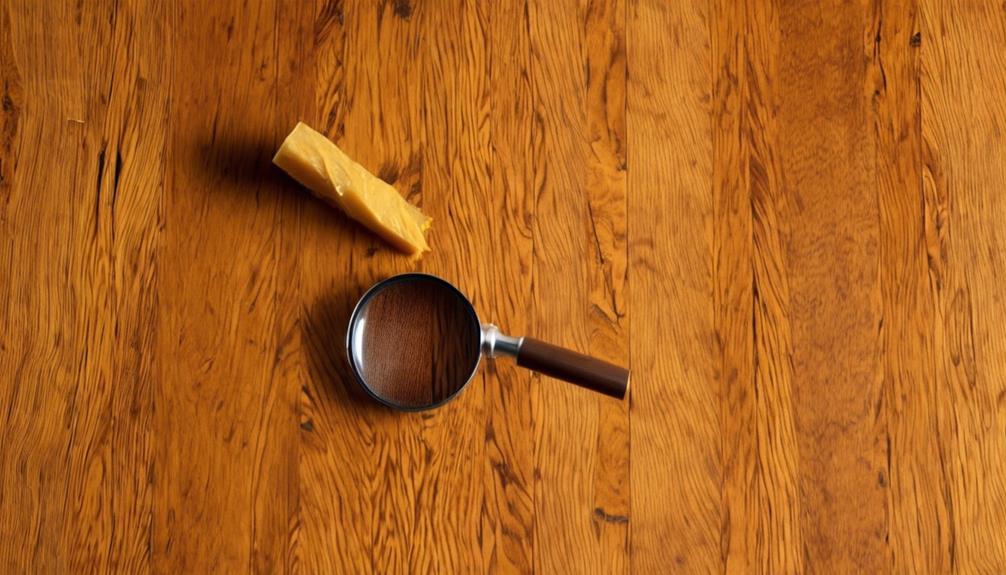
Before you start using beeswax on your hardwood floors, it's crucial to understand its unique properties and how they contribute to its effectiveness as a natural floor finish.
Beeswax is a natural wax produced in the bee hive of honey bees. Its color varies from nearly white to brownish, but most often is a shade of yellow, depending on purity and the type of flowers the bees gather nectar from.
Beeswax is known for being highly durable, which is what makes it an excellent choice for hardwood floors. Unlike other common waxes, it doesn't flake or become brittle over time. It's also moisture resistant, meaning it'll protect your floor from water damage.
Beeswax also has a low melting point. This attribute allows it to penetrate into the wood, filling in any small pores or cracks, resulting in a smooth, lustrous finish. Its natural, mild scent adds a pleasant aroma to your home too.
However, it's important to note that beeswax doesn't provide a high-shine finish like some synthetic alternatives. Instead, it imparts a rich, deep glow to the wood, highlighting its natural grain and character.
The Impact on Hardwood Floors
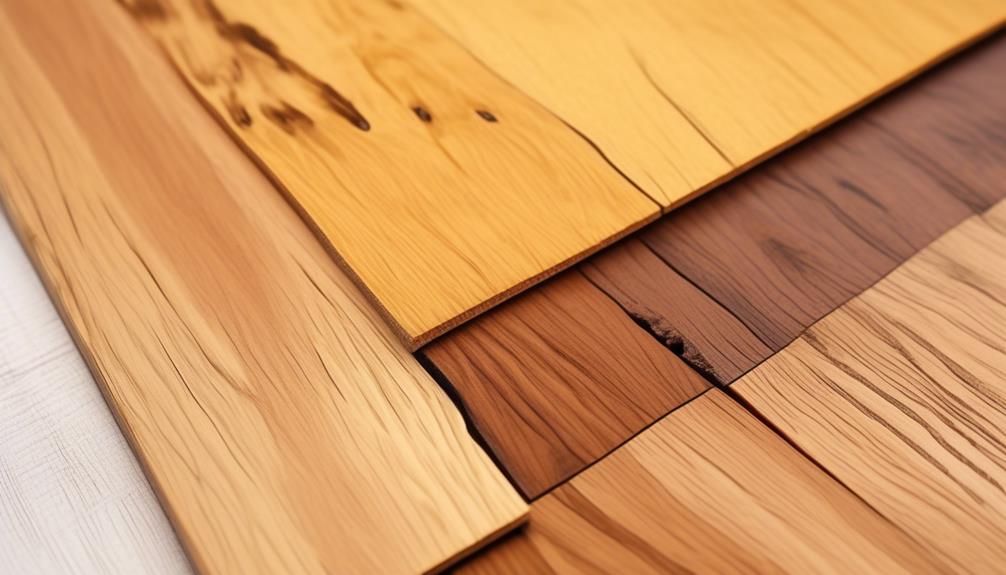
When you apply beeswax to your hardwood floors, you're not just adding a protective layer, but also enhancing the beauty and longevity of the wood itself. This natural substance seeps into the wood's pores, creating a barrier against dirt, moisture, and everyday wear and tear. This protective layer not only preserves the floor's pristine condition but also reduces scratches and scuffs that can mar its appearance.
Moreover, beeswax helps to bring out the wood's natural color and grain, giving your floors a rich, lustrous sheen that's quite appealing. It's like giving your floor a facelift, restoring its youthful glow and vibrancy.
However, you need to keep in mind that while beeswax adds a protective layer, it's not as hard or durable as synthetic finishes. You'll need to reapply it more frequently to maintain its protective and aesthetic qualities. Also, beeswax isn't suitable for all types of hardwood floors, especially those with a pre-existing finish.
Step-by-Step Beeswax Application

To apply beeswax effectively to your hardwood floors, you'll need to follow a meticulous process, ensuring that each step is performed with precision and care.
Start by sweeping or vacuuming the floor thoroughly to remove dust and debris. You don't want these particles to get trapped under the wax. Then, clean the floor using a slightly damp mop and a mild cleaner. Ensure it's thoroughly dry before proceeding.
Next, you'll need a quality beeswax product. Apply a thin, even layer of wax using a soft cloth or sponge, working along the grain of the wood. Some prefer to use a circular motion, but it's really up to you. Just remember to distribute the wax evenly.
Leave the wax to dry. This can take anywhere from 10 minutes to an hour depending on the product and the room's temperature and humidity. Once dry, buff the floor with a soft cloth or a floor buffer if you have one. Buffing should be done in the direction of the wood grain until you achieve a lustrous shine.
It's as simple as that. Regular beeswax application will keep your hardwood floors looking their best for years to come.
Pros and Cons of Beeswax
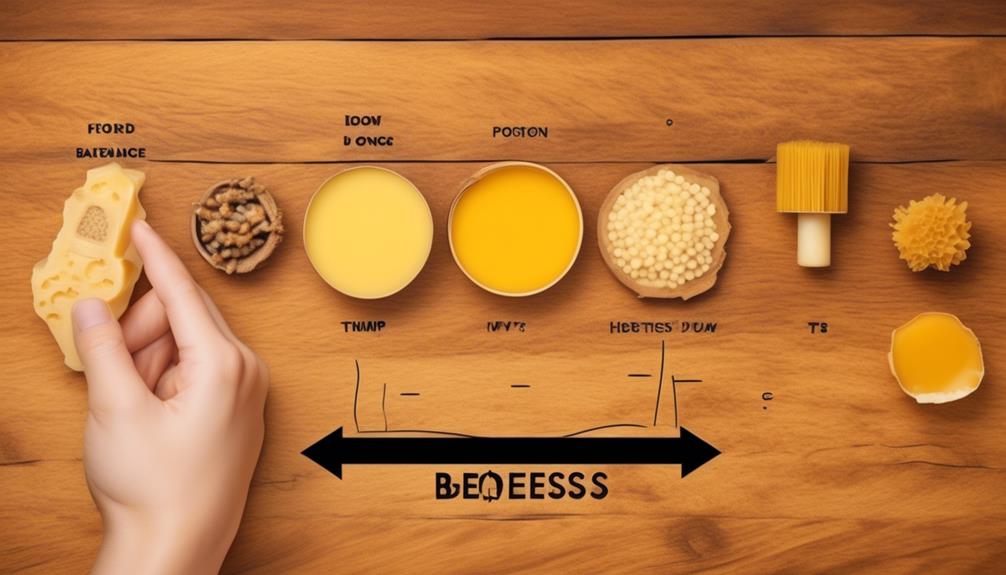
Let's delve into the advantages and disadvantages of using beeswax on your hardwood floors.
On the plus side, beeswax is an excellent choice for adding a natural, warm glow to your flooring. It's also great for nourishing the wood, as it penetrates deep into the fibers, sealing and protecting it from wear and tear. Additionally, it's a natural product, free from harsh chemicals, making it a healthier option for your home environment.
However, beeswax isn't without its drawbacks. It requires more time and effort to apply compared to synthetic alternatives. You'll need to heat it to a liquid state, apply it evenly, then buff it to a shine. This process can be laborious and time-consuming. Moreover, it doesn't provide as durable a finish as some modern finishes, so you may find you need to reapply it more frequently.
Also, if you have darker wood, beeswax can darken it further. While this may enhance the grain and character of the wood, it mightn't be the effect you're aiming for. Lastly, beeswax can be more expensive than synthetic alternatives, so it's worth considering your budget.
Alternatives to Beeswax for Floors
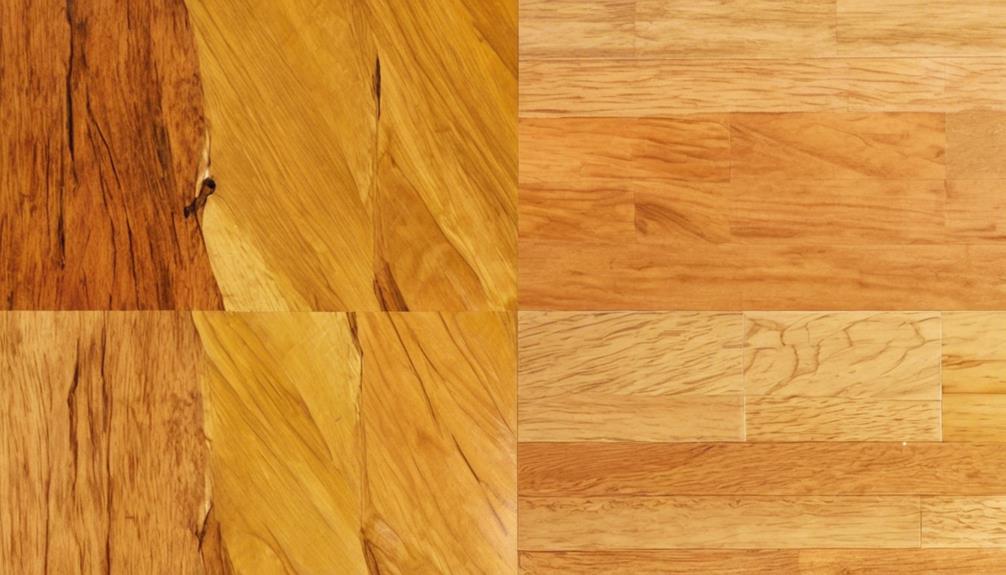
While beeswax has its charm, you might find yourself exploring other alternatives for your hardwood floors that could offer different advantages. For instance, polyurethane is a popular choice for its high-gloss finish and impressive durability. It's resistant to water, making it a great bet if you're dealing with a high-moisture environment. However, it's not as easy to apply as beeswax and it may yellow over time.
Another alternative is oil-based finishes, like tung or linseed oil. They penetrate deep into the wood, enhancing the grain and providing a warm, natural look. However, these oils take longer to dry and require more maintenance than beeswax or polyurethane.
Hard-wax oil is another contender. It combines the best of both worlds – the ease of application of beeswax and the durability of polyurethane. It's eco-friendly and gives a matte finish, maintaining the natural look of the wood.
Frequently Asked Questions
Can Beeswax Be Used on All Types of Hardwood Floors?
Yes, you can use beeswax on all types of hardwood floors. It's a natural, safe option that not only cleans but also protects and enhances the wood's natural beauty.
Just ensure you're applying it correctly. Firstly, clean your floor thoroughly. Then apply a thin layer of beeswax and buff it until it shines.
How Frequently Should I Apply Beeswax on My Hardwood Floor?
Sure, you can apply beeswax to your hardwood floors.
How often depends on the floor's usage and your desired look. If it's a high traffic area, you'll likely need to reapply every few months. However, in lower traffic areas, once or twice a year should suffice.
Always remember, before reapplying, clean the floor thoroughly to prevent wax buildup.
It's all about maintaining that beautiful, natural shine!
Can I Mix Beeswax With Other Floor Treatments for Better Results?
Yes, you can mix beeswax with other floor treatments for better results. However, it's important to ensure the products you're combining are compatible. Always test a small, hidden area first.
Beeswax pairs well with oils like linseed or tung, enhancing the floor's shine and durability. Don't mix it with polyurethane or water-based finishes, though; they won't bond properly.
Are There Specific Brands of Beeswax Recommended for Hardwood Floors?
Absolutely, there are specific brands of beeswax that work wonderfully on hardwood floors. Howard's Feed-N-Wax and Daddy Van's All Natural Unscented Beeswax Furniture Polish are both excellent choices. They're safe, natural, and leave your floors looking polished and fresh.
You'll want to ensure you're applying them correctly for the best results, but you can't go wrong with these brands. Remember, a little goes a long way with these products.
Is It Safe for Pets and Children to Be Around After Applying Beeswax to Hardwood Floors?
Yes, it's safe for both pets and children to be around after you've applied beeswax to your hardwood floors. Beeswax is a natural, non-toxic substance that doesn't emit harmful fumes.
However, you should still make sure the wax has completely dried before anyone walks on it. This not only ensures the best finish, but also prevents anyone from slipping on the still-wet wax.
Conclusion
In conclusion, beeswax offers an all-natural, cost-effective solution for your hardwood floors. It enhances their aesthetic appeal while providing a protective layer. However, it's not without drawbacks, like its labor-intensive application and potential for attracting dust.
So, it's vital to consider your specific needs and circumstances before opting for beeswax. Remember, several alternatives can also provide excellent results, so don't hesitate to explore all your options.

